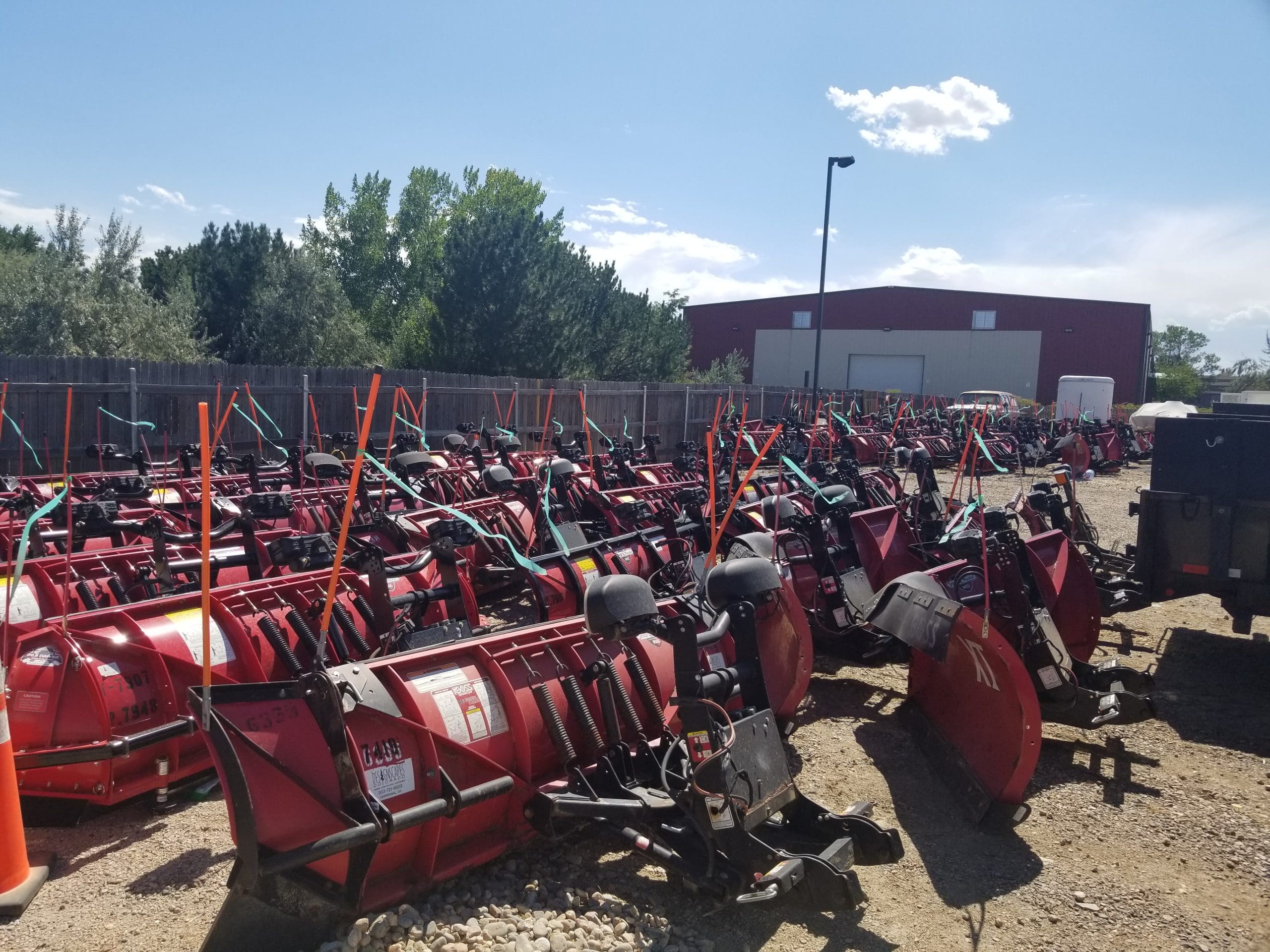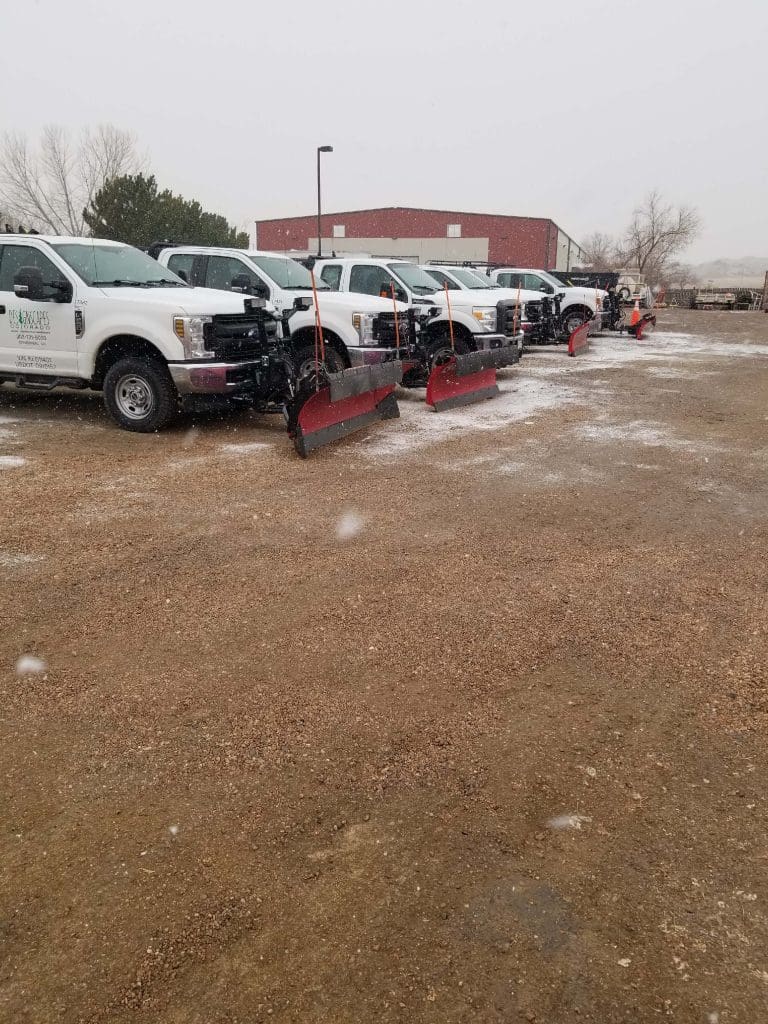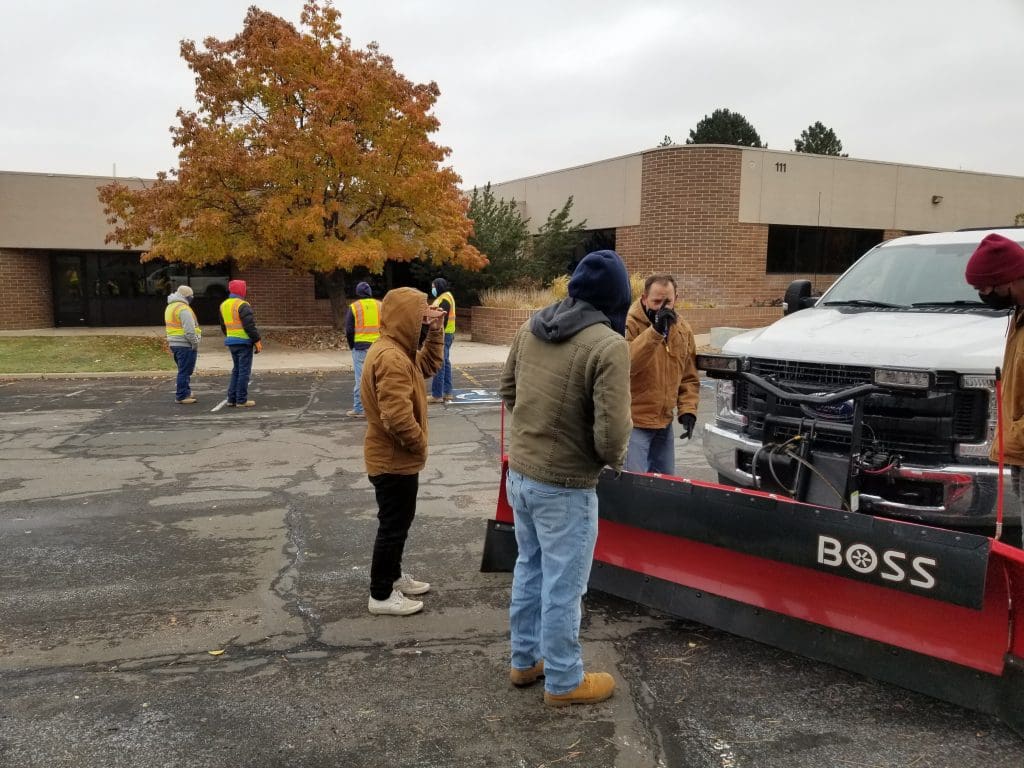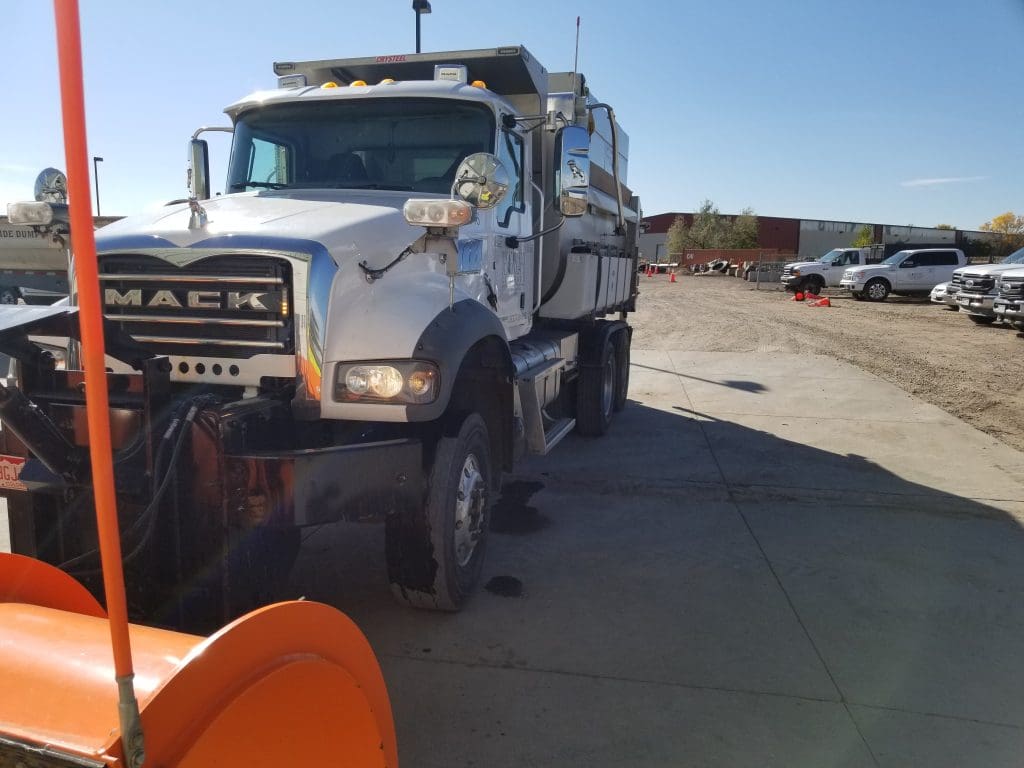
By Michael Wagner, director of company operations for Designscapes Colorado
In the landscaping industry, many organizations operating in potential winter weather climates face the challenges of preparing for snow as you mow lawns, repair irrigation, and manage many projects. As the summer season rolls on, sometimes we realize we’re running behind on preparing our snow equipment and operators for the start of the winter season. Let’s look at a best practice timeline to help keep your operations on track without causing a strain on equipment, business, and personnel.
Stage 1 – Planning
This stage takes place in the late spring and early summer when snow and cold weather ends, and we are transitioning to warmer weather for the landscaping season. This is the best time of year to include your snow operations team in a planning meeting to discuss your timeline of project tasks and milestones. Here is a simple list of tasks to get you started:
- Plan timeline of expected task completion dates
- Discuss challenges or obstacles and how to navigate them
- Set and equipment and vehicle maintenance, inspection, and repair schedule
- Talk about successes and struggles from the previous snow season
In this meeting, it’s important to involve the key players in the snow operations to ensure all information is gathered and that everyone involved is on the same page moving forward. You may want to include personnel such as:
- Snow operations manager
- Snow site supervisors or regional supervisors
- Snow operations administrators
- Fleet manager or shop manager
- Any other personnel involved in the process
Stage 2 – Implementation

During this stage, you should have a couple of processes beginning to move forward. These processes include equipment and shop maintenance and repairs, training program and activity planning, contract reviews and revisions, site walks and visits, and beginning to set up the schedule of crews and personnel for known snow sites. This certainly can be difficult to initiate all of these required tasks while performing your summer responsibilities, but it is important to manage your time well and not give up on dedicating time to your snow preparations throughout the summer. This stage can be one of the most difficult to get moving because everyone’s responsibilities are transitioning for the next 4-5 months! During the implementation stage, here are a few tasks you should add to your calendar that will help you stay on track with the snow operations personnel as listed above:
- Regular meetings (every 2 to 3 weeks) with snow ops team to discuss progress and challenges
- Open line of communication between all parties and having reminders of milestones on calendars such as:
- When equipment is scheduled to come in for maintenance and repairs
- When the training program should be completed and ready
- When crew schedules, routing, and snow maps must be finished
- When contracts must be finalized
Stage 3 – Completion
Now that you’ve neared the end of the summer preparation of snow equipment, sites, contracts, and personnel, it’s time to act and begin the process of training!

Many times, for organizations that perform landscaping operations, this can pose conflicts because it can be hard to find the time for personnel and vehicles away from landscaping ops. This is a vital time for the snow operations team to work with other department or operational managers to set up an effective and efficient schedule to perform training, and still be able to complete their daily activities. Prior to training the personnel, ensure you have prepared all of the materials they will need to aid in their success such as:
- Snow route maps
- Contact sheets with names and phone numbers of shovelers, plow drivers, equipment operators, site supervisors and managers, as well as property manager/owner point of contact
- Safety equipment inside vehicle and equipment
- All other necessary tools for the job
When you complete the training activities with personnel, make sure you include specific activities to help them prepare for the season, such as:
- How to prepare for extreme weather conditions
- Driving or operating vehicles and equipment in snowy and icy conditions
- Perform site visits, site walks, live training activities to potential simulate response efforts
- Discuss proper ice melt, slicing, and liquid applications to best take care of slippery surfaces and reduce the environmental impact of deicing and anti-icing activities
- Any other hands-on or web-based training available to you (there are many options available through multiple professional associations for training support)
Stage 4 – Deployment

Now that the equipment has been prepped, personnel is trained, sites are ready, and all documentation is in order, it’s time to plow snow and cut the ice! By being diligent in your summer activities and tasks you’re setting your personnel up for greater success, as well as performing the strongest level of service (LOS) for the client.
Ensure that you have all channels of communication refined and relayed to all involved personnel, and make sure you continue to host periodic performance and process meetings to discuss what is working well, what’s not working so well, and how can we continue to improve what we are doing and the service we are offering. In recent times, our weather patterns and weather cycles are evolving due to environmental transitions, so it’s important to be adaptable and communicative about how snow operations perform and complete the job.
Conclusion
After covering a timeline and brief best practices for the industry in snow preparation activities, don’t wait until late in the summer season to begin, and utilize resources available to you that can help support your ongoing success. Get involved in associations, join peer networks, and learn from others’ success and obstacles that may better help you plan and stay on track to have an incredible deployment, increased personnel morale, pleased clients, and exceptional performance!

